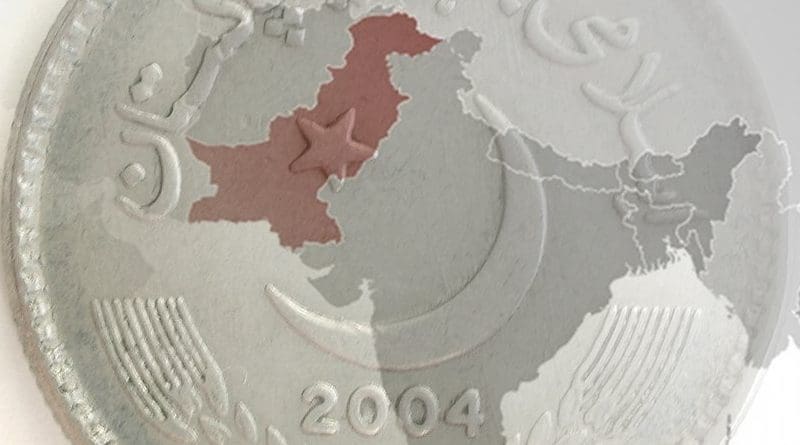Pakistan’s Economic Outlook And The Imperative For Political Stability – OpEd
By Dr. Sahibzada Muhammad Usman
The economic pillar of Pakistan has lately encountered a growing economic stability with international capital investors increasingly focusing on the issuance of Pakistani dollar bonds. The electing of these incumbents as presidents has become a representative vote of confidence in the country’s economic viability that also clearly highlights the critical role of political stability and practical fiscal policy.
After the elections were over, political uncertainty deceased in Pakistan and what is more important is this positive trend is also acknowledged by the foreign investors. Bloomberg’s report further reinforces this attitude, it pointing the occurrence of greater investment in the Pakistani dollar bonds. The upgrade by Bank of America in dollar bonds rating of Pakistan implies that the vested international bank is very confident about Pakistani economy. The agenda is kindled but the process is thorny. Therefore, political stability and consensus building among the stakeholders is a mandate for sustained positive trajectory.
At the same time, universal difference in the political power of a democratic system, it is crucial for leadership of Pakistani to balance between the interests of the state and the drive for the political power. Encouraging an atmosphere of political stability and reconcilement will help to enhance the trust of private sector investors, get foreign investments, and kick-off economic growth.
Pakistan is facing severe debt situation as there are around $6 billion worth of repayments due for June which includes a 9-digit bond maturity of April. Moody’s decision to uphold Pakistan’s credit rating at Caa3 is a stern admonishing that shows the government fiscal limitations. For the effective solution of the problem this approach of Pakistan should combine the several forms which include the fiscal discipline, debt restructuring and also strategic investment.
The duty to repay debt might be an obstacle in the short term, but at the same time it opens up the channels for changes and debt restructuring. Pakistan may utilize negotiations with international financial organizations such as IMF, to agree on concessionary terms and postpone reimbursement deadlines. As part of the journey, government can consider a diversification of its funding options such as green bonds as well as Islamic finance instruments to bring in socially responsible investors to assist.
Pakistan’s work with international financial institutions, particularly that of the IMF, continues to be a pivotal player in dealing with its fiscal problems hence easy the strings that bind access to capital. The approaching mature of IMF program brings forth an opening for the state to reshuffle the loan agreement more in-tune with the purpose of creating a more robust economic foundation of Pakistan.
Moreover, Pakistan needs to consider building other multilateral development bank’s partnerships for instance, the World Bank and the Asian Development Bank in order to have access to additional funding and technical expertise. Thus, such bodies can be useful in terms of providing expertise and other tools to assist in bringing Pakistan into the line with its development goals that include infrastructure investments, poverty alleviation and social welfare projects.
Besides its interactions with the international financial institutions Pakistan must be reorienting its regional partnerships and the economic diplomacy strategies. China’s decision to extend $2 billion of debt-relief fund to Pakistan suggests that the depth of bilateral relationship and the strategic alliances would help in the finding effective solutions of financial issues in the world.
Along with external partnerships, Pakistan must undertake structural and systemic reforms at the domestic level in order to ensure sustainable economic diversification, improve the domestic competitiveness, and bring evitable social inclusion. Prominent leverages for the reform comprise sharpening the business climate, strengthening regulatory frameworks and developing the human capital as key areas for the reform.
Similarly, as part of its diversification plan Pakistan should focus on sectors with high prospects, such as technology, renewable energy and agriculture. By nurturing innovation and entrepreneurship, Pakistan might be able to come up with new sources of income, attract an unprecedented level of foreign investment, and shift the focus from conventional sectors like textile and production.
The increasing involvement of foreign investors in Pakistan becomes another driving factor for enhancing the country’s efforts in creating a feasible setting for the economic growth. Nevertheless, struggling through the mere existence to create the capacity is a process that involves a joint-action of dealing with fiscal challenges, a strengthener of the institutional capacity and, lastly, which politically stabilizes the country. Through emphasizing sound fiscal management, seeking support from the international financial institutions, and undertaking internal policy changes, Pakistan is likely to lure foreign contributions into economic operations and thus drive economic growth as well as raise the living standards of citizens. The country can get along this route with wise leadership and with commitment to inclusive development and, despite uncertainties, can reach prosperity and resilience on the edge of global economic challenges.

